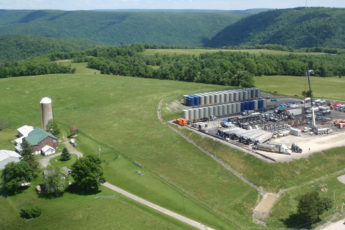Future of energy: Policy and finance
This story is part of a series on Stanford collaborations helping to create the Future of Energy.
Much of the energy research that has proliferated at Stanford since 2002 focuses on technological solutions – improved solar cells, better batteries for storing energy, carbon capture and storage. But without federal and state policies supporting adoption of these technologies, few are likely to replace fossil fuels any time soon.
One way to accelerate adoption of low-carbon energy technologies is to put a price on carbon. Former U.S. Secretary of State George Shultz, director of the Hoover Institution’s Shultz-Stephenson Energy Policy Task Force, has proposed a revenue-neutral carbon tax: Industries that emit carbon dioxide would be faced with a choice – either reduce CO2 emissions or pay a carbon tax that is then refunded to consumers.
Dan Reicher and colleagues at Stanford’s Steyer-Taylor Center for Energy Policy and Finance are looking at an array of policies and related financing mechanisms, including how federal tax credits affect the growth of solar and wind power in the United States, as well government policies to encourage carbon capture and sequestration.
“The U.S. government has long played a vital and successful role in helping to commercialize energy technology through federal loan guarantees and other programs,” said Reicher. “This support helps innovators cross the colorfully but accurately named ‘Valley of Death’ that sits between the early development of an advanced energy technology and its full commercial deployment.”
The Steyer-Taylor Center was founded with a gift from alumni Tom Steyer and Kat Taylor, who also funded the TomKat Center for Sustainable Energy that sponsors a program to help students and faculty advisors get innovative ideas through the Valley of Death to commercial success.
Stanford experts say achieving a carbon-free future is going to take a combination of innovative ideas and better technologies coupled with policies and financial strategies for helping those technologies succeed and be adopted.
Policy leaders
Several Stanford scholars have held key government positions affecting energy policy, among them:
- Steven Chu, U.S. Secretary of Energy (2009-2013)
- Dian Grueneich, California Energy Commissioner (2005-2010)
- Arun Majumdar, founding director of U.S. Department of Energy’s Advanced Research Projects Agency-Energy (ARPA-E)
- Frankin “Lynn” Orr, U.S. Under Secretary for Science and Energy (2014-2017)
- Dan Reicher, Assistant U.S. Secretary of Energy (1997-2001)
- George Shultz, U.S. Secretary of State (1982-1989)










